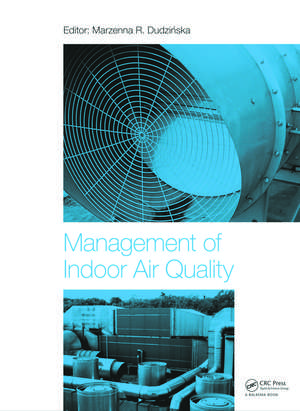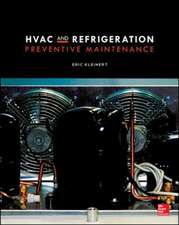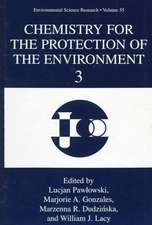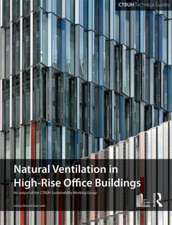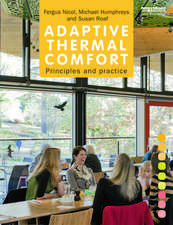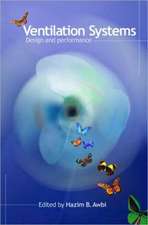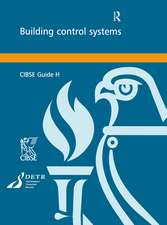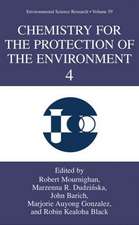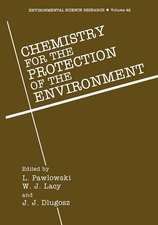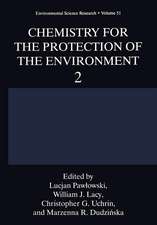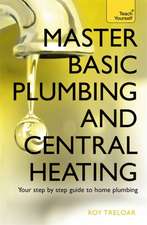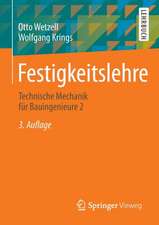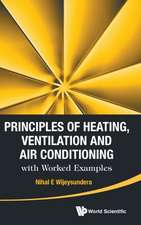Management of Indoor Air Quality
Editat de Marzenna R. Dudzinskaen Limba Engleză Hardback – 7 iun 2011
Indoor Environment Engineering is a relatively new scientific discipline with an interdisciplinary character, using knowledge from chemistry, biology, medicine and engineering. Since the early 1990s, the number of studies in this area has grown significantly from research on indoor air parameters, new emerging pollutants in indoor air, energy saving systems of heating, to studies on ventilation and air-conditioning in buildings. Even though much progress has been made since then, a number of questions still remains open:
- How can indoor air quality be measured? What are reliable, time- and cost-efficient methods?
- How can indoor air quality be improved, investing as little energy as possible?
- How to minimize secondary pollution caused by air supply systems?
- Which type of pollutants should research focus on?
- In what way are we exposed to new pollutants (plasticizers, flame retardants, pesticides)? What is their impact on our health?
Preț: 875.55 lei
Preț vechi: 1215.83 lei
-28% Nou
Puncte Express: 1313
Preț estimativ în valută:
167.59€ • 182.10$ • 140.87£
167.59€ • 182.10$ • 140.87£
Carte tipărită la comandă
Livrare economică 21 aprilie-05 mai
Preluare comenzi: 021 569.72.76
Specificații
ISBN-13: 9780415672665
ISBN-10: 041567266X
Pagini: 158
Dimensiuni: 174 x 246 x 15 mm
Greutate: 0.45 kg
Ediția:1
Editura: CRC Press
Colecția CRC Press
ISBN-10: 041567266X
Pagini: 158
Dimensiuni: 174 x 246 x 15 mm
Greutate: 0.45 kg
Ediția:1
Editura: CRC Press
Colecția CRC Press
Cuprins
Preface. Biohazards in the indoor environment – A role for threshold limit values in exposure assessment. Seasonal variation and size distribution of bioaerosols in an air-conditioned auditorium – A case study. Aerosol particle concentrations and indoor air parameters in school classrooms. Indoor activity of 222Rn in different types of rooms in domestic dwellings. Emission of volatile organic compounds (VOC) from lacquered surfaces. Nail polishes and nail polish removers as sources of volatile organic compound emissions. Improvement of thermal comfort and the possibility of energy savings using personalized ventilation. Panel heating systems while thermal comfort and energy saving in residential building. The choice of an optimal heating system for a low-energy single-family house under Polish climatic conditions – A case study. Thermal conditions and aerosol particle number concentration in a lecture room. Thermal modernization and biodeterioration of prefabricated elements of buildings – A case study. A method for testing different materials for their use as radon barriers. Magnetic properties of dust as indicators of indoor air pollution: Preliminary results. TiO2-based photocatalysts in indoor swimming pool air purification.
Descriere
Management of Indoor Air Quality is a collection of 14 peer reviewed papers in indoor environment engineering. Papers address how indoor air quality can be improved and measured, what types of pollutants research should focus on, impacts on health, and more. It includes research on HVAC impact on aerosol levels, new ventilation systems as well as air quality problems in new environments. The volume is intended for scientists, engineers, and post-graduate and graduate students interested in the indoor environment.
